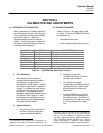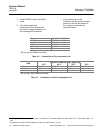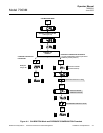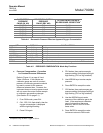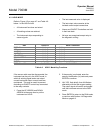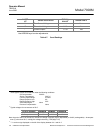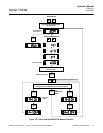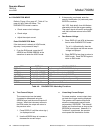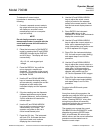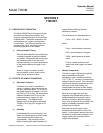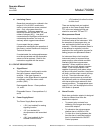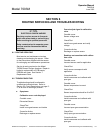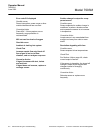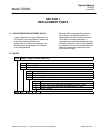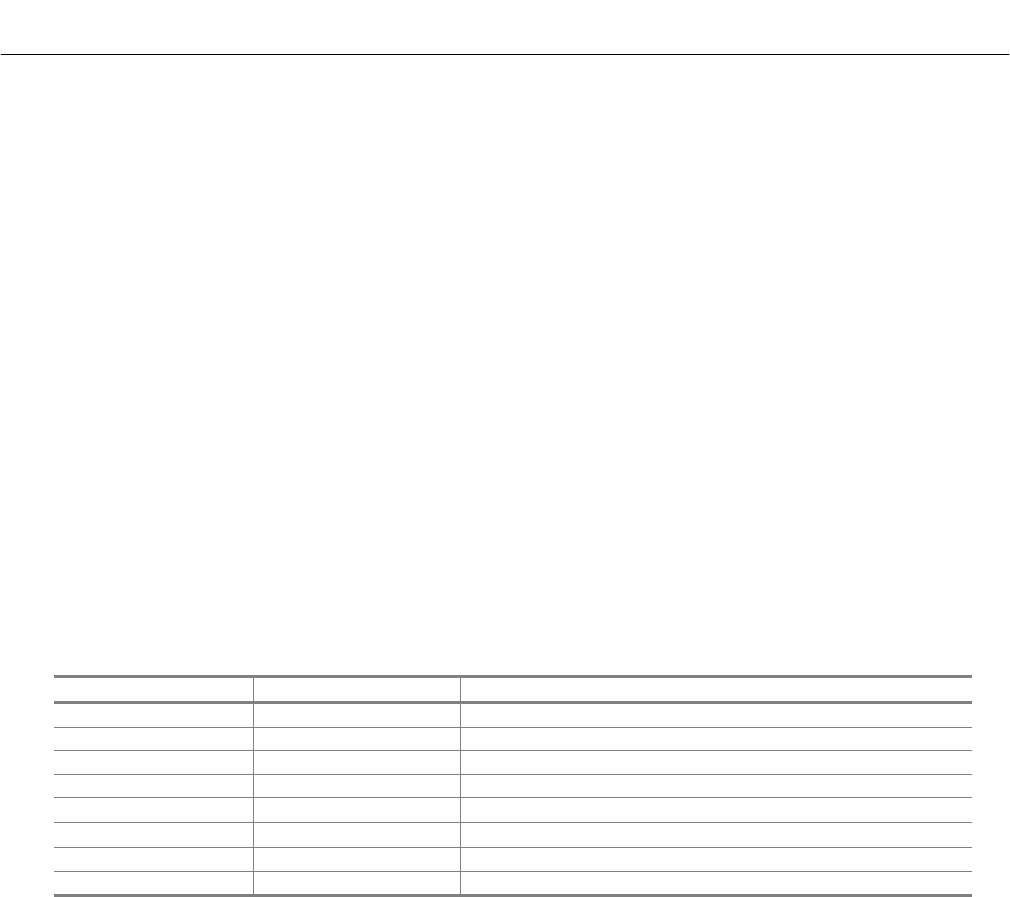
Operator Manual
748223-K
June 2002
4-8 Calibration and Adjustments Rosemount Analytical Inc. A Division of Emerson Process Management
Model 7003M
4-4 DIAGNOSTICS MODE
Refer to Figure 4-2 on page 4-7, Table 4-7 on
page 4-6 and Table 4-8 below. The
DIAGNOSTICS mode is used to:
• Check sensor circuit voltages
• Check relays
• Adjust the output current
Enter DIAGNOSTICS Mode
If the instrument is already in HOLD mode,
skip step 1 and proceed to step 2.
1. From the RUN mode, press the UP
ARROW and DOWN ARROW at the
same time to enter the HOLD mode.
2. If the security is activated, enter the
security identification (id) code and press
ENTER to continue.
Hld, YES, flash briefly, then Hld flashes
alternately with the last oxygen reading.
The output signal will remain unchanged
until the instrument returns to the RUN
mode.
a. Raw Sensor Voltage
1. Press DISPLAY and ACK at the same
time to enter DIAGNOSTICS mode.
Tst, d-3, d-4 flash briefly, then the
%O
2
caret lights and the raw sensor
voltage is displayed.
2. Press ENTER at any time to return to
HOLD mode. Press ENTER again to
return to RUN mode.
KEY DISPLAY WHAT HAPPENS
DISPLAY "2.13" Scrolls among the DIAGNOSTIC displays
ACK Nothing Nothing
ALARM 1 "A-1" "On"/ "OFF" Toggles the Alarm 1 relay ON/OFF
ALARM 2 "A-2" "On" / "OFF" Toggles the Alarm 2 relay ON/OFF
UP ARROW
"2.13" →"2.14"
Increases current output or span setting
DOWN ARROW
"2.14" →"2.13"
Decreases current output or span setting
CAL Nothing Nothing
ENTER "hLd" Drops back to HOLD mode
Table 4-8. DIAGNOSTICS Mode Key Functions
b. Test Current Output
The current output can be tested
(increased or decreased using the
ARROW keys) and the actual output will
change. When the instrument returns to
the RUN mode, the output will return to
the previous value.
1. Press DISPLAY until the minus sign (-
) is displayed on left.
2. Use the ARROW keys to increase or
decrease the current output.
c. Linearizing Current Output
For some samples, current output does
not track the oxygen reading displayed.
The operator can linearize output and
store the compensating second-order
polynomials in EEPROM. This data will
remain and function there as long as the
EEPROM is not erased. However, if a
"cold boot" is performed, the operator
must repeat this linearization routine.




